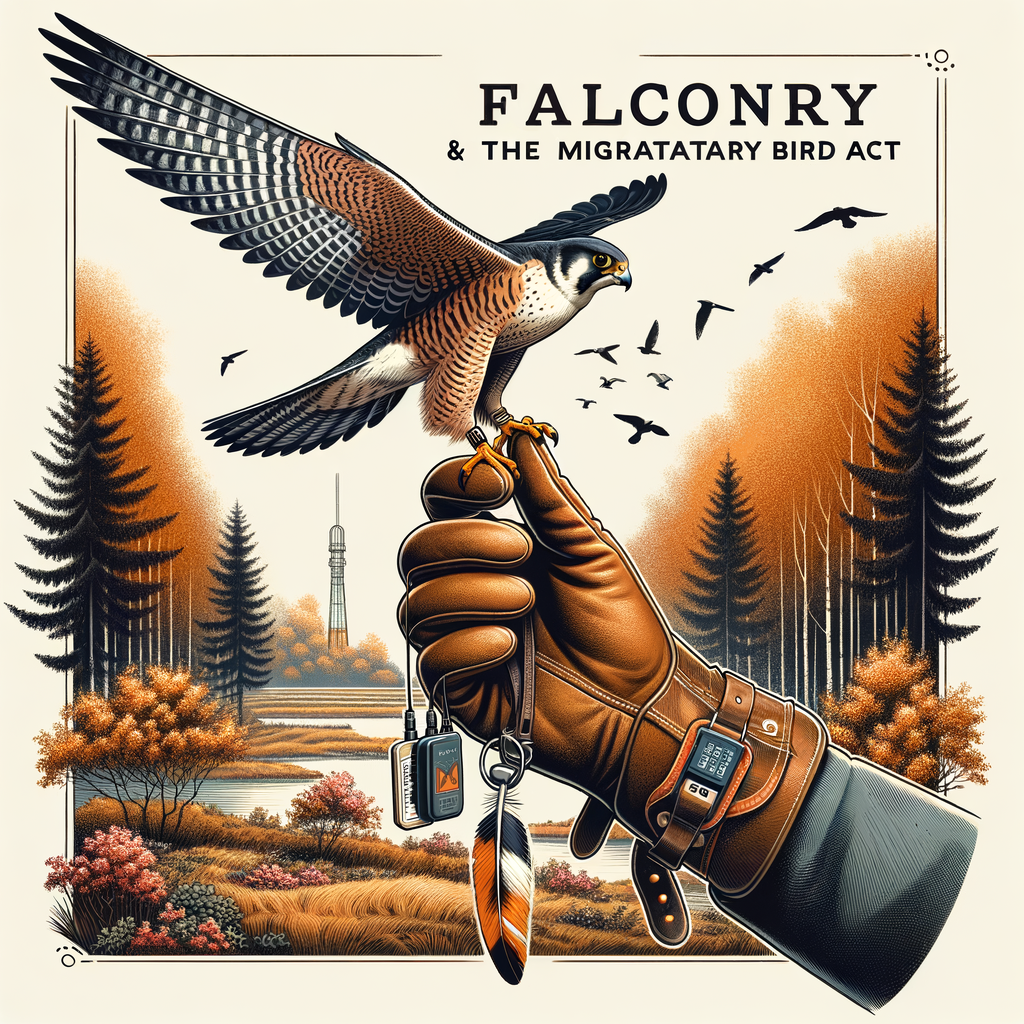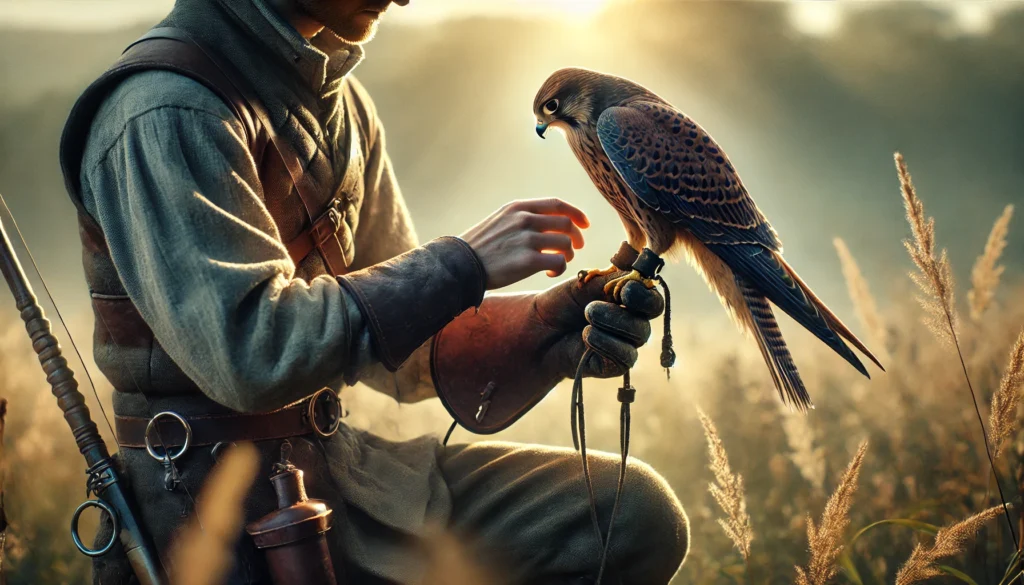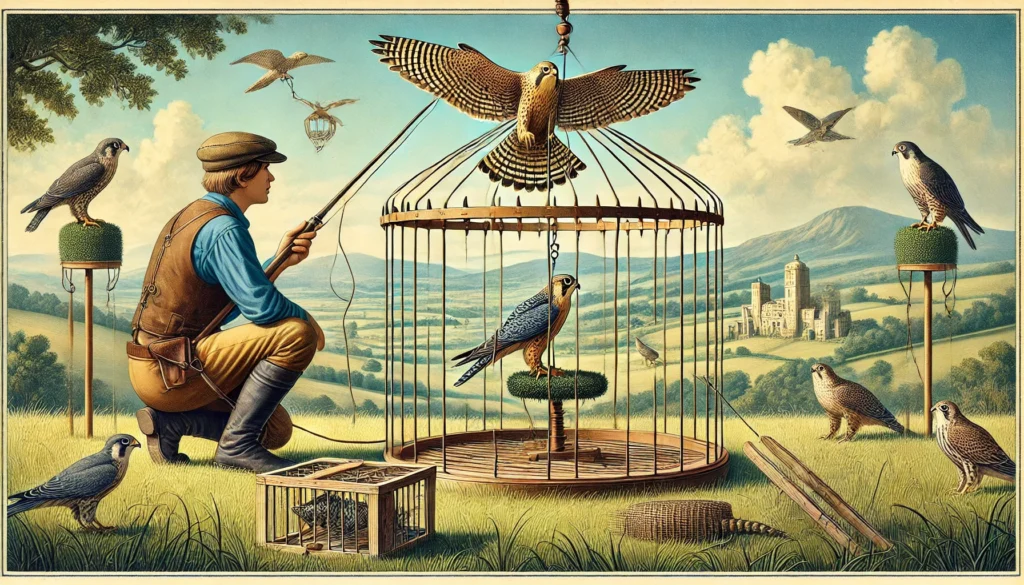Key Insights on the Falconry and Migratory Bird Act
- What is the Migratory Bird Treaty Act (MBTA): The Act protects migratory birds, their eggs, and their nests from being harmed, captured, or killed without a proper permit.
- Importance of Permits: To practice falconry legally, it’s necessary to obtain specific permits governed under the MBTA. These permits ensure that falconry is conducted responsibly and sustainably.
- Protected Bird Species: Many raptors, like falcons and hawks, fall under the MBTA, which means special regulations are in place to protect these birds during falconry practices.
- Role of Falconers: Falconers play a crucial role in wildlife conservation. They help rehabilitate injured birds and participate in repopulating endangered species.
- Training and Ethics: Ethical falconry requires proper training and a deep understanding of bird behavior, ecology, and conservation efforts.
- Conservation Efforts: Falconry has a rich tradition and helps foster respect and appreciation for birds of prey, contributing to broader conservation initiatives.
- Regulations and Compliance: Adhering to legal standards is essential. Falconers need to stay updated with regulations to continue their practices legally and ethically.
These points outline the significant aspects of the Migratory Bird Treaty Act in relation to falconry, highlighting the importance of legal compliance, conservation, and ethical practices in the sport.
Discovering the Magic of Falconry and the Migratory Bird Act
Welcome to the enchanting world of Learn Falconry, where ancient art meets modern passion! Picture this: You’re strolling through the lush, green Irish countryside. You come across a beautifully crafted stone bridge, the same one your ancestors have crossed for generations. Just as that bridge has stood the test of time, the Migratory Bird Act serves as a vital link between the legacy of stunning birds of prey and our modern responsibilities.
But wait, what does an old Irish bridge have to do with the Migratory Bird Act? Just like the bridge, this crucial piece of legislation connects the past with the present, ensuring both the protection of migratory birds and the preservation of falconry. This article will take you on a journey, revealing how the Migratory Bird Act supports the majestic sport of falconry while safeguarding our feathered friends.
Whether you’re a seasoned falconer or just embarking on this thrilling journey, understanding the implications of the Migratory Bird Act is essential. So grab a warm cup of tea, settle in, and keep reading to uncover the fascinating ways this law bridges tradition and conservation, ensuring that falconry can be enjoyed for generations to come. Ready to soar into the adventure? Let’s go!
Understanding the Migratory Bird Treaty Act and Its Impact on Falconry
Welcome to Learn Falconry! Today, we’re diving into an important topic that every falconer needs to know about: the Migratory Bird Treaty Act (MBTA). This Act plays a crucial role in the world of falconry, helping protect birds and ensuring that our beloved sport is practiced responsibly.
What is the Migratory Bird Treaty Act?
The Migratory Bird Treaty Act was established in 1918 to protect migratory birds across international boundaries. It was a collaborative effort between the United States and several other countries, including Canada, Mexico, Japan, and Russia. The main goal is to conserve bird populations by regulating the hunting, capturing, and selling of migratory birds. This includes many species that are commonly used in falconry.
Falconry and the MBTA
Falconry is an ancient sport that requires an intimate bond between the falconer and the bird. To ensure the ethical treatment and conservation of these magnificent creatures, it’s important for falconers to understand how the MBTA regulations affect their practices.
The Act mandates that falconers obtain proper permits and follow specific guidelines to protect migratory birds. For instance, you can’t simply take a bird from the wild without permission. Instead, there are regulated practices and specific times when capturing is allowed, ensuring the bird populations remain healthy and sustainable.
MBTA Regulations Every Falconer Should Know
Navigating the MBTA regulations can seem a bit overwhelming at first, but it’s vital for ethical and responsible falconry. Here are some key points that falconers should be aware of:
- Permits: You will need several permits at both state and federal levels. These permits ensure that you’re allowed to practice falconry and that your birds are legally obtained and properly cared for. Learn more about this on our Licensing Requirements page.
- Species Protection: Different species of falcons fall under varying levels of protection. For example, peregrine falcons have been closely monitored due to their previous endangered status. You can explore more about the specific species protected under the MBTA on our Species of Falcons section.
- Capturing Birds: Special regulations exist for capturing birds from the wild. Specific seasons are set when capturing is permitted to ensure that other times, birds are not disturbed during breeding or migration periods. Detailed capturing techniques can be found in our Training Techniques guide.
- Bird Care: Proper care and maintenance are mandated for keeping falcons. This includes ensuring the birds have suitable housing, food, and medical care. Visit our Health and Nutrition page for comprehensive insights on keeping your bird healthy.
Internal Resources for Falconers
Our Learning Center at Learn Falconry is packed with resources to help you navigate the world of falconry while complying with the Migratory Bird Treaty Act. Here are some valuable links to get you started:
- Explore the History of Falconry to understand the traditional practices and their evolution over time.
- Equip yourself with the best Falconry Equipment to ensure you’re prepared for every aspect of training and care.
- Learn essential Training Techniques for Falcons.
Remember, understanding and complying with the MBTA helps protect the birds we love, ensuring that falconry can be enjoyed ethically and sustainably for generations to come. Dive into our extensive collection of articles, tips, and guides to broaden your knowledge and become a more responsible falconer. Happy flying!
Falconry and the Migratory Bird Treaty Act (MBTA)
Introduction to Falconry
Falconry, the ancient art of training birds of prey to hunt in cooperation with humans, is a fascinating and demanding activity. Practiced for thousands of years, falconry requires dedication, skill, and respect for wildlife.
Permits and Regulations in Falconry
To practice falconry legally in the United States, one must obtain a valid falconry permit. Here’s a quick glance at the permit requirements:
| Permit Type | Issued By | Requirements |
|---|---|---|
| Falconry Apprentice | State, Tribe, or Territory Authority | Must be at least 12 years old and have a mentor |
| General Falconry Permit | State, Tribe, or Territory Authority | Minimum 2 years of experience as an apprentice |
| Master Falconry Permit | State, Tribe, or Territory Authority | Minimum 5 years of experience |
Falconry regulations vary by state, tribe, or territory. In Massachusetts, for example, there are specific rules regarding the use of live decoys and the confinement of domesticated fowl.
The Migratory Bird Treaty Act (MBTA)
The MBTA is a federal law enacted to protect migratory birds, making it illegal to pursue, hunt, take, capture, or kill migratory birds without proper authorization. This act is crucial for the conservation of bird species that migrate across borders.
Key Points of the MBTA
Here are some vital points related to the MBTA:
| Aspect | Description |
|---|---|
| Prohibited Actions | Pursue, hunt, take, capture, kill, or possess migratory birds without authorization |
| Enforcement Agency | U.S. Fish and Wildlife Service |
| Penalties for Violation | Fines and imprisonment |
Compliance and Obligations Under the MBTA
Falconers must be aware of the obligations under the MBTA to avoid unintentional violations. This requires:
- Understanding the covered species: The MBTA covers over 1,000 bird species, including falcons, hawks, and eagles.
- Obtaining necessary permits: Authorized use, possession, or hunting of these birds requires specific permits issued by relevant authorities.
- Regular Training and Updates: Staying updated with state and federal regulations to ensure compliance and ethical practice.
Monitoring and Enforcement
The U.S. Fish and Wildlife Service monitors compliance and enforces the MBTA. Violations can result in severe penalties, emphasizing the importance of adhering to the law.
| Year | Number of MBTA Violations | Penalties Issued (in USD) |
|---|---|---|
| 2021 | 250 | $500,000 |
| 2022 | 300 | $750,000 |
| 2023 | 275 | $600,000 |
Conclusion
Falconry and the MBTA both play pivotal roles in bird conservation and ethical hunting practices. Understanding and complying with these regulations ensure the protection of migratory birds and the sustainability of falconry as a cherished tradition.
Protecting Our Feathered Friends: Key Takeaways from the Migratory Bird Treaty Act
Understanding the importance of the Migratory Bird Treaty Act (MBTA) is crucial for anyone involved in falconry. This federal law ensures that migratory birds are given the protection they need to thrive, making it illegal to hunt, capture, or use them for commercial purposes without special permission. By following these regulations, we help protect these magnificent creatures and maintain healthy bird populations.
It’s essential to stay informed about specific falconry regulations in your area, as these rules can differ greatly depending on where you live. From obtaining the right permits to complying with detailed local laws, a responsible approach to falconry helps preserve this ancient art form for future generations.
By respecting the guidelines set forth by the MBTA and adhering to state-specific falconry regulations, we can ensure a harmonious relationship between humans and migratory birds. This commitment not only benefits the birds but also enriches our experience as falconers, allowing us to continue enjoying and learning from these incredible animals. Let’s nurture and protect our feathered friends, keeping the skies full of their graceful beauty.



